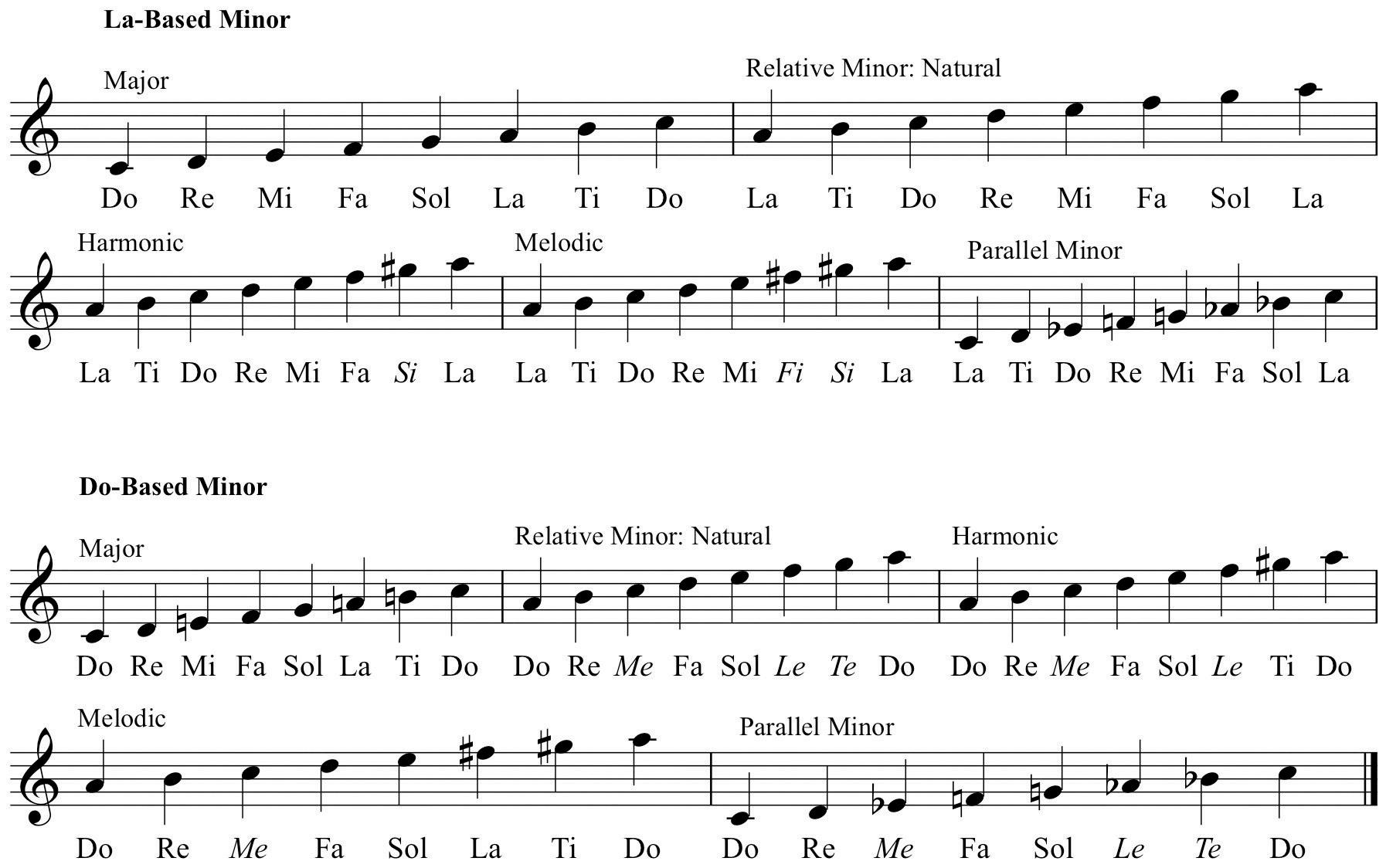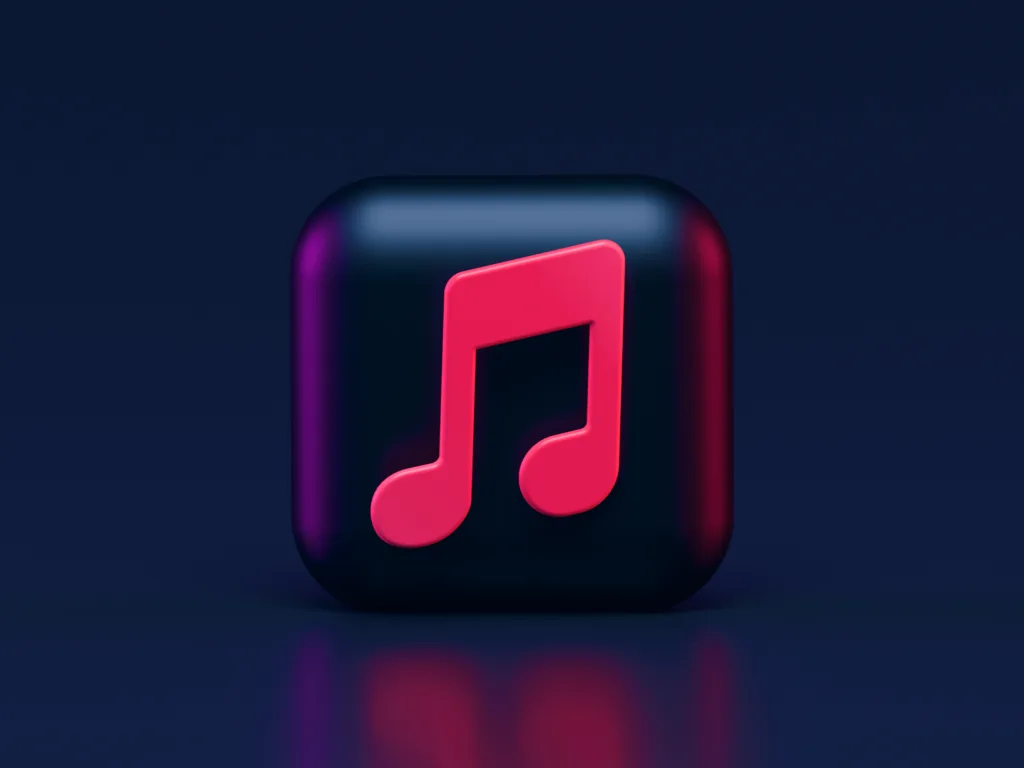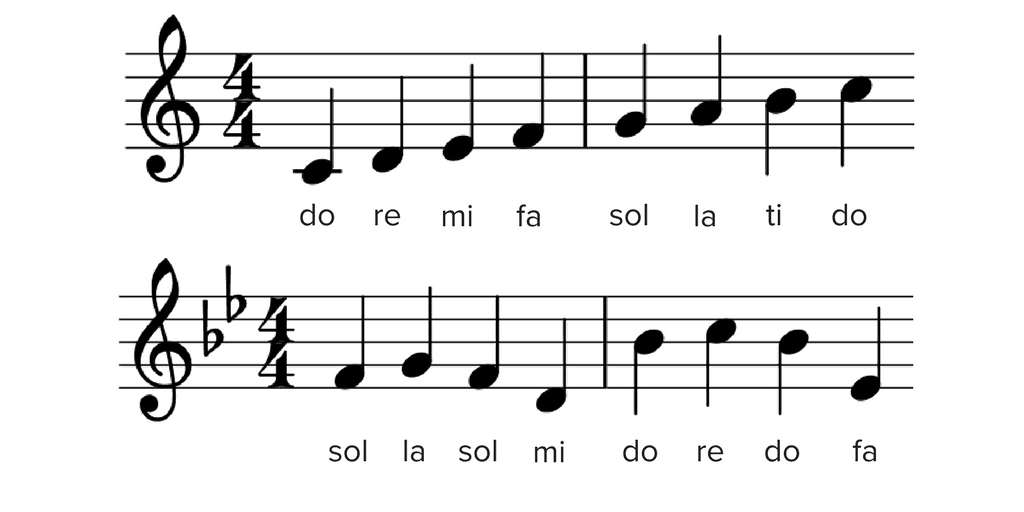The Do Re Mi scale, also known as Tonic Sol-fa, is a traditional way of teaching music that has been used for centuries. It is a simple and effective way of teaching the concept of intervals and the sound of each note in the scale. Understanding and mastering the Do Re Mi scale can significantly improve your ability to pitch notes and recognize the sound of each note.
The Do Re Mi scale consists of seven notes, which are named do, re, mi, fa, so, la, and ti. Each note is assigned a syllable, and a hand gesture is assigned to each syllable. This makes it easy to remember the notes and their sequence. The hand gestures also help to reinforce the sound of each note in your mind.
The Do Re Mi scale is often used in vocal warm-ups and exercises. It is an excellent way to warm up your voice and improve your pitch accuracy. Singing the scale slowly and carefully can help you tune your voice and develop a better ear for pitch.
In addition to its use in vocal exercises, the Do Re Mi scale is also used in music theory and composition. Understanding the intervals between the notes in the scale can help you create melodies and harmonies that are pleasing to the ear. The Do Re Mi scale is also the basis for the solfeggio system, which is used in classical music to teach and notate musical compositions.
The origins of the Do Re Mi scale can be traced back to a Gregorian chant called “Ut Queant Laxis.” The chant features a phrase that starts on each successive note of the major scale, which is whre the Do Re Mi scale gets its name. The Do Re Mi scale has been used in music education ever since, and it remains a popular and effective way to teach music to this day.
Understanding and mastering the Do Re Mi scale can significantly improve your ability to pitch notes and recognize the sound of each note. It is a simple and effective way to warm up your voice, improve your pitch accuracy, and develop a better ear for music. Whether you are a beginner or an experienced musician, the Do Re Mi scale is an essential tool for learning and creating music.
The Purpose of the Do-Re-Mi Scale
The Do-Re-Mi scale, also known as Tonic Sol-fa, serves the purpose of teaching and understanding the concept of intervals and the sound of each note of the scale. It is a traditional and effective method of teaching the pitch of notes and how they should sound. By learning the Do-Re-Mi scale, one can identify the distance between each note and understand the relationship between them. This is particularly useful for musicians who need to have a strong understanding of pitch and melody. Additionally, the Do-Re-Mi scale can be used as a tool for ear training, allowing individuals to develop thir ability to recognize and reproduce different pitches accurately. Overall, the purpose of the Do-Re-Mi scale is to provide a foundation for understanding the basics of music theory and to help individuals develop their musical abilities.

Source: 2012books.lardbucket.org
The Names of the Do-Re-Mi Fa So La Ti Do Scale
Yes, the musical scale names used in Tonic solfa notation are Do, Re, Mi, Fa, So, La, Ti, and then it ends with another Do. These syllables represent the seven notes of a major scale, with Do being the fist note, Re the second, Mi the third, Fa the fourth, So the fifth, La the sixth, and Ti the seventh. The hand gesture associated with each syllable helps learners to visualize and remember the notes in the scale, making it a useful tool for teaching music theory and sight-singing. Tonic solfa notation is commonly used in choral music, but it can be applied to any instrument or genre of music.
The Range of Do-Re-Mi
The range of Do-Re-Mi, as featured in the popular musical “The Sound of Music,” is from C4 to C5 in the original key of C Major. This means that the notes start at the C note in the fourth octave and go up to the C note in the fifth octave. It is important to note that the vocal range may vary depending on the artist performing the song, as different singers have different vocal ranges. However, the original key and range for Do-Re-Mi remains the same in the context of the musical.
The Origin of the Name Do-Re-Mi
Do-re-mi is a system of solmization, or the practice of assigning syllables to the different pitches of a musical scale. The syllables do, re, mi, fa, sol, la, and ti are used to represent the notes of the major scale in this system. The term do-re-mi comes from the firt three syllables of this system.
The origin of this system can be traced back to a Gregorian Chant called “Ut Queant Laxis”, which dates back to the 8th century. In this chant, each phrase starts on successive notes of the major scale, and the syllables ut, re, mi, fa, sol, la are used to represent those notes. However, in the 11th century, Guido of Arezzo, an Italian music theorist, replaced the syllable ut with do, which is easier to sing and has a more open sound.
Since then, the system of solmization with the syllables do-re-mi has been widely used in Western music education and is still commonly used today. It provides a simple and effective way for students to learn the notes of the major scale and helps with ear training and sight-singing. So, Do-Re-Mi is simply a shorthand way of referring to this system of solmization, which has a long and rich history in music education.
Uses of the Song Do-Re-Mi
Do-Re-Mi is a system of solfeggio, also known as solfège, which is widely used in Western music education. It is a method of teaching music which involves assigning a syllable to each note of the musical scale to help singers and musicians to learn and memorize music quickly and accurately. Do-Re-Mi is commonly used in many European countries, including France, Italy, Spain, and Portugal, as well as in Latin America. It is also used in some parts of Asia, such as Japan, but it is not as widely used as in Europe. In contrast, the United States uses a diferent system of music notation, which assigns letters to the notes of the scale, such as A, B, C, etc. Overall, Do-Re-Mi is a popular and effective way of teaching and learning music theory and practice, particularly in European and Latin American cultures.

The Seven Musical Notes
The 7 main musical notes, also known as the diatonic scale, are A, B, C, D, E, F, and G. Each of these notes represents a specific frequency or pitch, and they are arranged in a specific order to create melodies and harmonies in music. These notes can be combined in various ways to form chords, scales, and other musical patterns that are used to create different styles and genres of music. Understanding the fundamental properties and relationships between these 7 notes is essential for anyoe who wants to explore the world of music and develop their skills as a musician or composer.
What Scale Is the Doremi System Based On?
The solfège syllables Do-Re-Mi represent a major scale, and the specific type of major scale depends on the starting note, also knwn as the tonic. For example, if we start the major scale on C, the notes would be C-D-E-F-G-A-B, and the solfège syllables would be Do-Re-Mi-Fa-Sol-La-Ti. Similarly, if we start the major scale on G, the notes would be G-A-B-C-D-E-F#, and the solfège syllables would be Do-Re-Mi-Fa-Sol-La-Ti. Therefore, the major scale represented by the solfège syllables Do-Re-Mi does not have a specific starting note, but rather represents any major scale with a tonic of the same name as one of the syllables.
What Is My Scale Name?
To determine the name of a scale, you need to identify its starting and ending note. A major scale aways starts and ends on notes of the same letter name, one octave apart. For example, if your scale starts on C and ends on C, then it is a C major scale. Similarly, if your scale starts on G and ends on G, then it is a G major scale.
However, it’s important to note that not all scales are major scales. There are other types of scales such as minor scales, pentatonic scales, and blues scales, among others. To identify the name of these scales, you need to follow the same process of identifying the starting and ending note. For instance, a natural minor scale starts on the sixth degree of its relative major scale and ends one octave higher on the same note.
In summary, the name of a scale is determined by its starting and ending note, and there are various types of scales that you can identify by following this process.
Comparing the Do Re Mi Scale and the ABC Scale
The Do Re Mi scale and the ABC alphabet are two different systems used to represent sound. The Do Re Mi scale is a musical notation system that represents the first three pitches of a scale, with Do representing the first pitch, Re representing the second pitch, and Mi representing the tird pitch. These three notes can be used to build a variety of different scales and melodies.
On the other hand, the ABC alphabet is a system used to represent the sounds of spoken language. It consists of 26 letters, each of which represents a specific sound or group of sounds. When put together, these sounds form words and sentences that can be used to communicate meaning.
While the Do Re Mi scale and the ABC alphabet may seem similar in that they both represent sound, they are fundamentally different in their purpose and application. The Do Re Mi scale is used primarily in music, while the ABC alphabet is used primarily in language and communication.

The Tempo of ‘Do Re Mi’: A Look at Beats Per Minute
Yes, “Do Re Mi” by blackbear has a tempo of 111 beats per minute (BPM). This means that the song’s rhythm moves at a moderate pace, with 111 beats occurring in one minute of the track. It’s worth noting that this tempo is not fixed, and the song can also be used at a slower pace of 56 BPM or a faster pace of 222 BPM. The tempo of a song can affect its energy and mood, and in the case of “Do Re Mi,” the moderate tempo contributes to the emotional and introspective tone of the track.
Who Invented the Music Notation System ‘Doremi’?
The Doremi scale, also known as the solfège scale or the moveable do system, was not actually invented by one specific person. Its origins can be traced back to 11th century Italy and Guido of Arezzo, a music theorist who is credited with developing the foundations of modern Western music notation. Guido modeled the scale on the “Hymn to St. John the Baptist”, taking the opening syllable of each line to create a scale that eventually evolved into the Doremi scale. The solfège system, which assigns a syllable to each note of the scale, was further developed by oher music theorists over the centuries, including Johannes Tinctoris and Jean-Philippe Rameau. Today, the Doremi scale is a fundamental aspect of music education and is used worldwide to teach music theory and practice.
Teaching Do-Re-Mi
To teach “Do-Re-Mi,” it is best to break it down into manageable parts. Begin by chanting the lyrics phrase by phrase, and asking the students to repeat after you. Make sure to emphasize the correct pronunciation of each word, so that the students can follow along easily. Once the students have successfully repeated the first verse, move on to the next.
After the lyrics have been memorized, it’s important to teach the melody of the song. This can be done by playing the melody on the piano and asking the students to sing along with you. Alternatively, you can use a recording of the song for the students to follow along with. It’s important to start slowly, so that the students can learn the melody at thir own pace.
Once the students are comfortable with both the lyrics and melody of the song, ask them to perform the song verse by verse as you play the melody on the piano. This will help them to develop their ear for music and learn how to stay in time with the music.
Overall, teaching “Do-Re-Mi” requires patience and repetition. By breaking the song down into manageable parts and focusing on each aspect separately, students can learn to sing the song with confidence and ease.
Number of Major Scales
There are a total of 12 major scales that can be played on a standard 88-key piano. Each major scale has its own distinct sequence of intervals between each note in the scale, creating a unique sound and feel for each one. These 12 major scales are a fundamental component of music theory and are often used as the basis for creating melodies, harmonies, and chord progressions in a wide variety of musical genres.

What Are Do-Re-Mi Notes Called?
The Do-Re-Mi notes are part of a system called solfège, which is used in musical cultures around the world, but is most commonly associated with western European music. The solfège system assigns a syllable to each note in a musical scale, with Do representing the first note, Re representing the second, and so on. The complete solfège syllables are Do-Re-Me-Fa-Sol-La-Ti, with each syllable corresponding to a specific pitch in the scale. The use of solfège is helpful for singers and musicians as it provides a standardized way of identifying and practicing musical notes.
Conclusion
In conclusion, the do re mi scale, also known as Tonic Sol-fa or Solfége, is a highly effective method of teaching and learning music. It helps students understand the concept of intervals and the sound of each note of the scale, which is essential to pitch notes correctly. The use of hand gestures for each syllable enhances the learning process and makes it more interactive. The do-re-mi scale has a rich history, dating back to Gregorian Chant, and is still widely used today. By learning the do-re-mi scale, individuals can gain a better understanding of music and develop ther musical abilities. Whether you’re a beginner or a professional musician, the do-re-mi scale is an essential tool for mastering music theory and achieving musical excellence.
